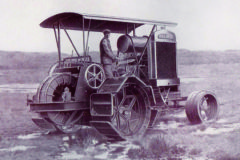Allis in Lockdownland!
Posted by Chris Graham on 6th July 2020
Jerry Thurston took the plunge and bought himself a 1948 Allis Chalmers Model B tractor unseen. This is his story of Allis in Lockdownland!
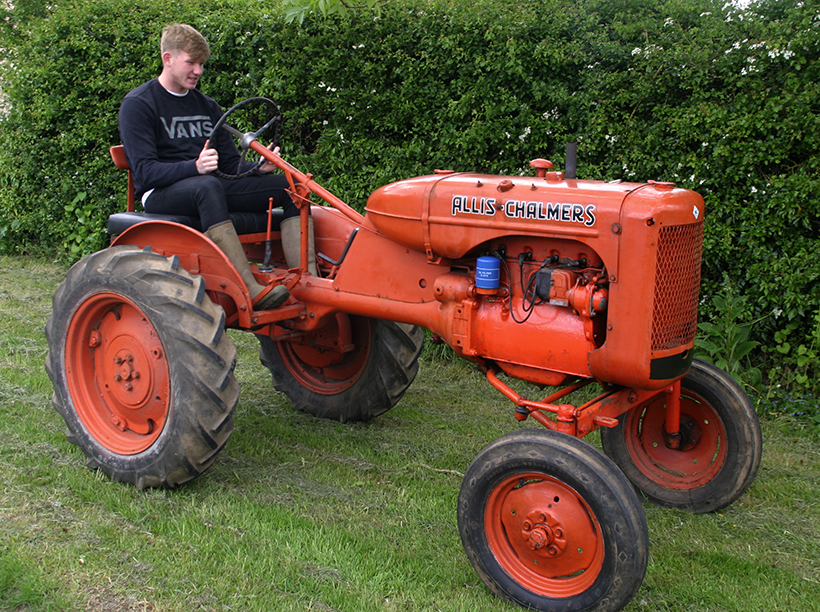
Allis in Lockdownland: After a few days spent tinkering, she appears to be a good runner, but road-testing will have to wait. Moving her 25 feet to another part of the garden for photos, is all we’ve been able to do.
Like many of you, I found myself with some extra thumb-twiddling time due to the Covid-19 pandemic and, when my son, Ed, pointed out that, as I love a project, there could be no better use of this extra time than to find my first tractor, I agreed.
With a budget of less than £1,000, we were never going to join the ranks of owners with rarities or veterans. But, provided we weren’t too choosy, a starter-classic tractor was eminently achievable. The criteria was simple; it had to be small(ish), as early as possible and on decent rubbers. The make or model didn’t really matter, it was all down to what cropped up at the right price.
The search begins
Sitting at the kitchen table searching online led us through all sorts of possibilities – a raft of Grey Fergusons, Farmall Cubs and even some larger stuff like ‘restoration-ready’ Standard Fordsons.
However, we kept coming back to one advert for a 1948 Allis Chalmers Model B, which ticked all the boxes. Although over budget, it looked good and was usefully situated at an agricultural dealer close by. If a deal could be struck, it could potentially be delivered.
Probably only the grey Fergie is more common than the Allis Chalmers Model B and, with over 120,000 made, you can guarantee it won’t be the only one on the rally field. But, being super common offers its upsides, including plentiful spares, support and information from a thriving Model B community.
So, within an hour I had a good idea about what an ‘all present and correct’ B should look like, and established that the one I was interested in was as it should be. It was time to pick up the telephone.
The description was encouraging. It was an older ‘restoration’ that had been a runner, and was even driven around the yard some years ago. After that it got buried at the back of the owner’s shed. With viewing a definite no-no, the buying process came down to a matter of trust; lots of questions and requests for photos, all patiently dealt with by the vendor.
Deal done!
Satisfied, we agreed the purchase in principal, and negotiated jovially over the weekend. By Monday morning, we had settled at a price that even left a little in the pot for its subsequent re-commissioning. With the money transferred, delivery was scheduled for ‘whenever’. The tractor would be squeezed into any spare space on their transporter the next time they were coming my way. I was told it could be cheap or quick, but not both!
Meanwhile, I made a list of all the consumables that I might need before any start-up attempt; the gap between buying and delivery would at least allow me to have these ready to go the minute the B arrived.
It would be foolhardy to attempt to start a vehicle that’s stood for years without fresh oil and any filter, so those were organised first. The 10/30 for the engine and 20wt transmission oil, were both supplied by Westway Oils. I found them online, and gave them a call and found them to be most knowledgeable fellows, and mail order specialists. That was easy!
Just as easy was a quick call to Nick at the Old 20 Parts Company. He provided the more specialist bits, like the oil filter and a gear lever gaiter, which I’d spotted was missing. I’m sure I’ll be back there for more parts as I dig further into the project. That all happened on a Monday and, by Thursday, all of the stuff had arrived. I didn’t have a tractor yet but, obce it arrived, I’d certainly be ready.

The Allis had arrived and Ed’s looking pretty stoked about it.
More excitingly, there was a phone call the next morning, with the news that the Allis was on its way and, by noon, it was outside being winched off the transporter. It’s odd not being able to help as your tractor is unloaded, but social distancing dictated that I couldn’t and, of course, there were no handshakes, either. More odd, was immediately wiping it down, – not because it was filthy, but for reasons of hygiene.
Combined approach
Right, if I started servicing at one end, and Ed began at the other, would it be possible to have it running by tea time? The challenge was on. I dipped the oil and found that it was between the marks, and only slightly discoloured. This was reassuring, but I was still going to replace it with fresh, new lubricant. The B is designed so that a full fluids service can be done without removing the bonnet; old oil out of the bottom, fresh in the top… 10 minutes, done.

The first job was to get the old engine oil drained, to give the motor a chance of first start-up.
I went on to check the state of the cooling water, but couldn’t see any in the top. The radiator drain tap, which lives in a metal joiner between the water pump and the bottom of the radiator, was stuck, so I pulled the entire lower pipe off. What cascaded out was clean and blue, which was great news. I poked a hose into the rad to flush out any crud, but I spotted nothing. Before replacing the pipe, I freed-off the stuck tap then, with the pipe re-attached, filled the system with a water/anti-freeze mix. Another easy job.
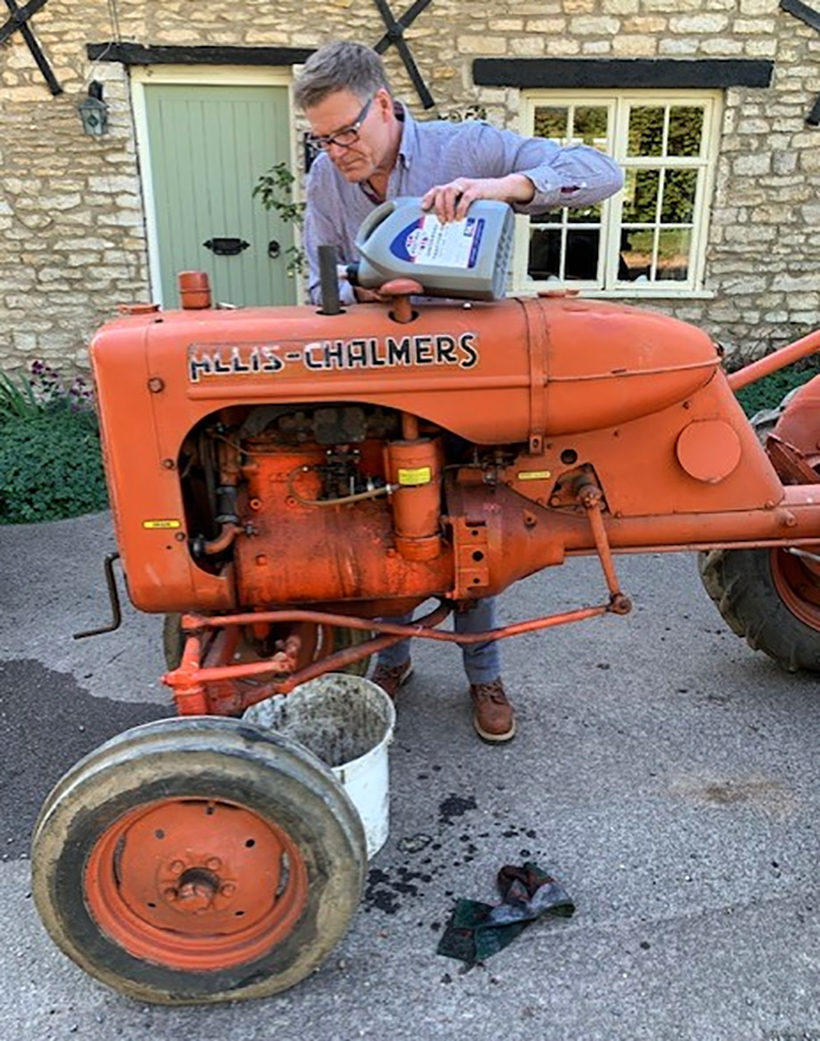
The Allis B is designed to be serviced without removing the bonnet, which proved handy for our initial quick service. We did pull it off later to lubricate the various linkages.
Meanwhile, Ed had dumped the transmission oil, and what came out of there looked more like expanding foam than lubricant. Presumably, water has contaminated the gear oil, so we refilled it the correct straight, 20wt transmission fluid, then planned to drain and re-fill again after an hour or two of running, to flush-out the rest of the contamination.
Fuel for thought!
The main fuel tank still had some liquid in it – maybe paraffin or kerosene. I wasn’t worried either way, and would drain it later. The starting petrol tank was dry but corrosion-free, which was a result! Ed found half a gallon of lawn mower fuel should be enough to see if the engine will run. A fresh fuel line was grubbed-up from the back of the shed, and we fitted an additional fuel filter as I was sure it would pass some muck over.
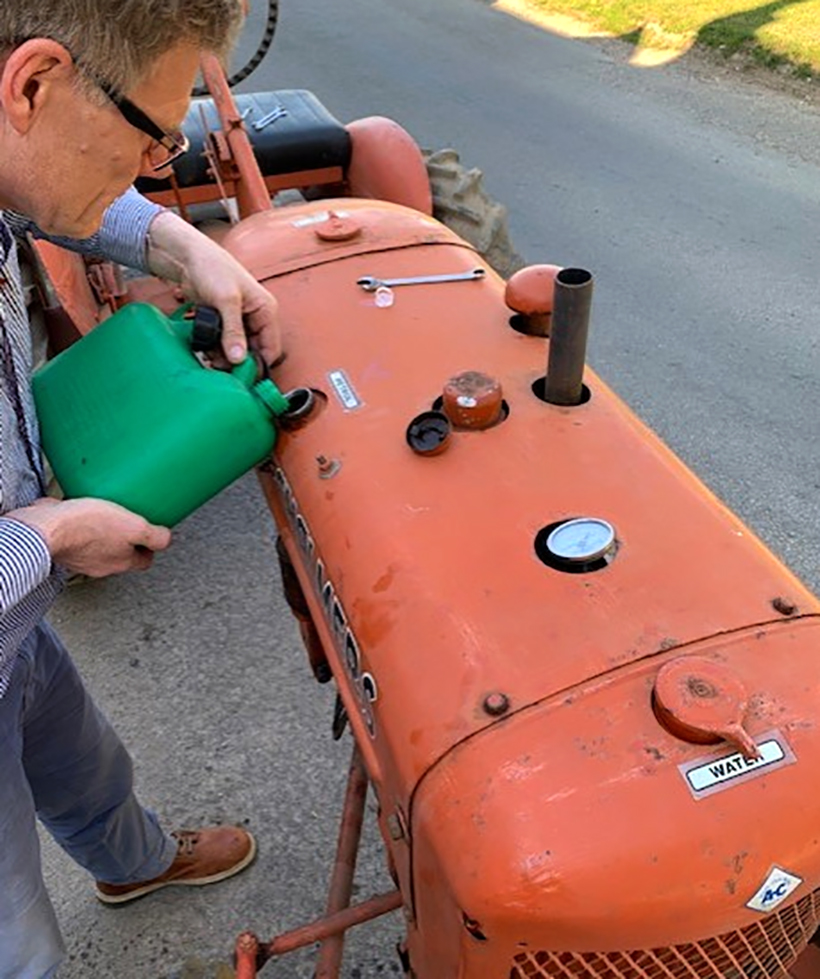
The starting tank gets a drop of fresh petrol. Full to the brim and no leaks, phew!
I whipped-out the spark plugs to check their condition, and found a motley mix; wrong thread length, two of one heat range, and two of another. Luckily, I had a set of new, correct-length plugs from a previous project which, although slightly the wrong heat range, would be better than the originals for the initial start.
Next I checked for the presence of a spark, which I’m happy to say was big and blue; a major relief as I hadn’t budgeted for any magneto work. Then, with all the fluids changed, fresh fuel flowing and a spark present, we’d reached the point where it was time to try starting the engine. According to the how-to videos it’s easy – open the throttle a tad, insert the starting handle, keep thumbs out of the way and pull it smartly over a few compressions. It’ll suck some fuel up and the impulse mag will do the rest.
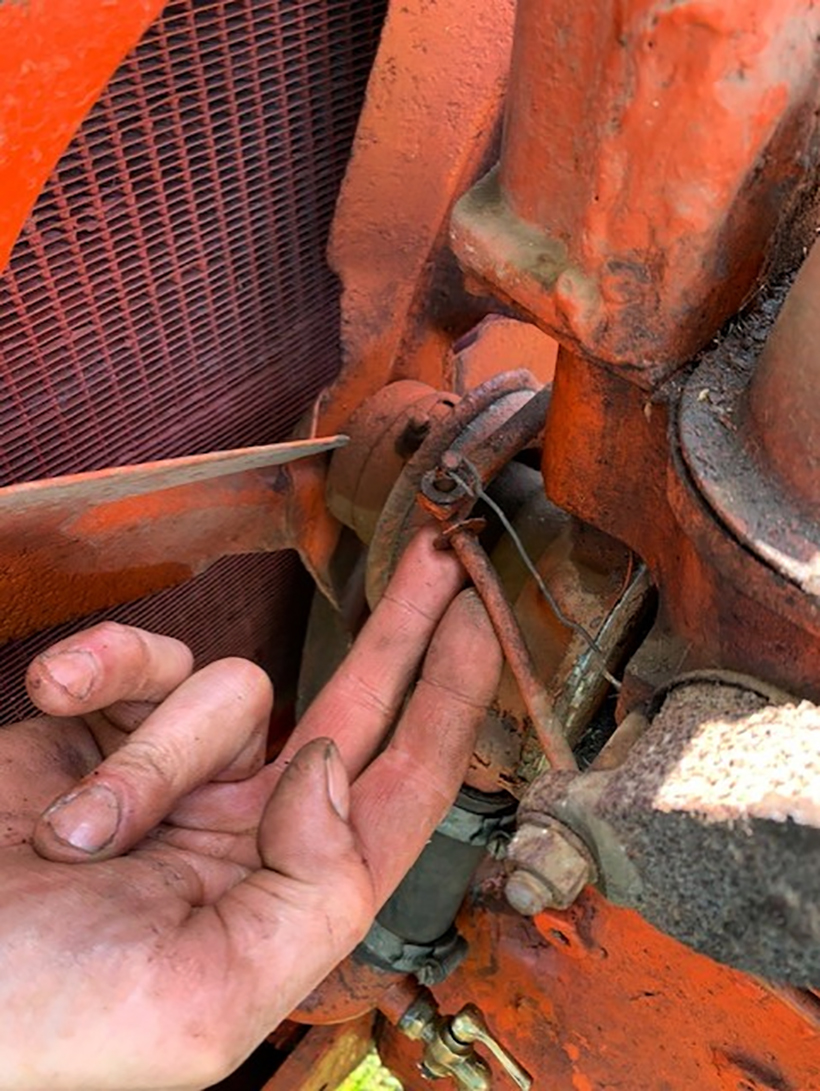
The governor linkages, although free, needed a little fettling to make them operate smoothly.
However, many pulls later, we still had nothing. Frustrated, I broke the rules and, rather than letting the mag do the work, I wound the beggar over. This is a recipe for a ‘kick back’ and a sore wrist but, we were so close to our tea-time deadline that we just have to win now. Cough, pop, cough… better, but still it didn’t run. Ed’s younger and stronger than me, so he took over.

What came out of the transmission might once have been oil. The fact that it was clean and metal-free was a positive.
Pop-pop-pop and, all of a sudden, she was away; running as rough as a badger’s do-dah, admittedly, but running nevertheless. The oil pressure was normal and so, with high-fives and whoops of delight, we shut her down, called it a day and reached for a celebratory beer.
Wiring issue
First thing the next morning, we re-checked the firing order… Ah-ha, wires had become crossed in yesterday’s haste. So, after putting the plug leads into their correct positions, dialling-in a bit of choke and turning the engine a few times, it fired and started running beautifully.
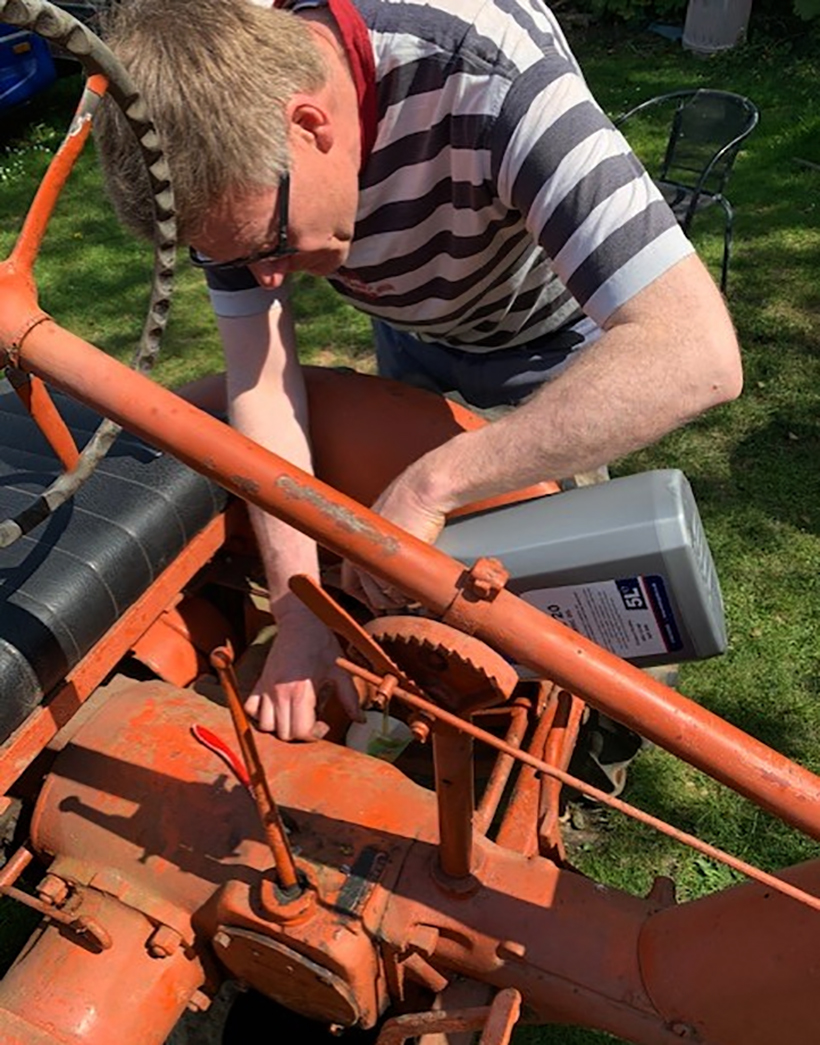
Three drain plugs, but there’s only a single, inch-wide filler for the whole of the transmission. It takes ages to carefully pour in a gallon-and-a-half of 20wt oil.
One of the front tyres would only hold air for a few minutes, neatly removing the temptation of a nefarious trip up the road, but allowing us a quick run around the garden to prove that she was drivable. We took it in turn for 20-foot shunts, and the frins on our faces were massive.
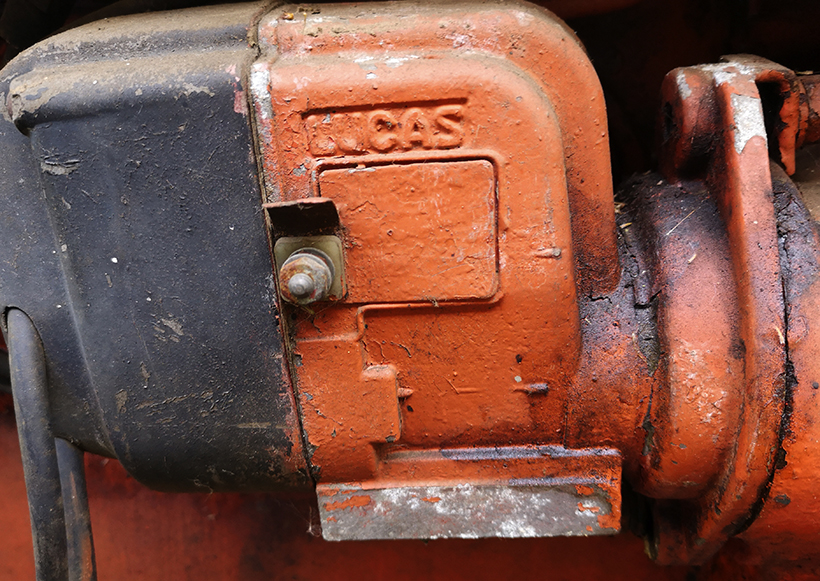
The Lucas magneto provided a fat blue spark… Phew, that was a relief.
Admittedly, it was still very early days, but I already had the feeling that I’d bought myself a good ‘un. There could have been so much wrong with it, but the only real issue we found was it having the wrong carburettor; it didn’t quite line up with the air filter, and had linkage angles that would have precluded full throttle, if needed. Although the engine ran perfectly well on it, I couldn’t live with it, so tracked down an original replacement from the spares that arch Allis enthusiast, the late Dave Everett, had.
Longer road test runs will have to wait until we’re allowed out again but, hopefully, this will coincide with my registration application coming though. Meanwhile, there’s loads of cleaning, greasing and improving for me to be getting on with. Staying safe has never been so much fun!
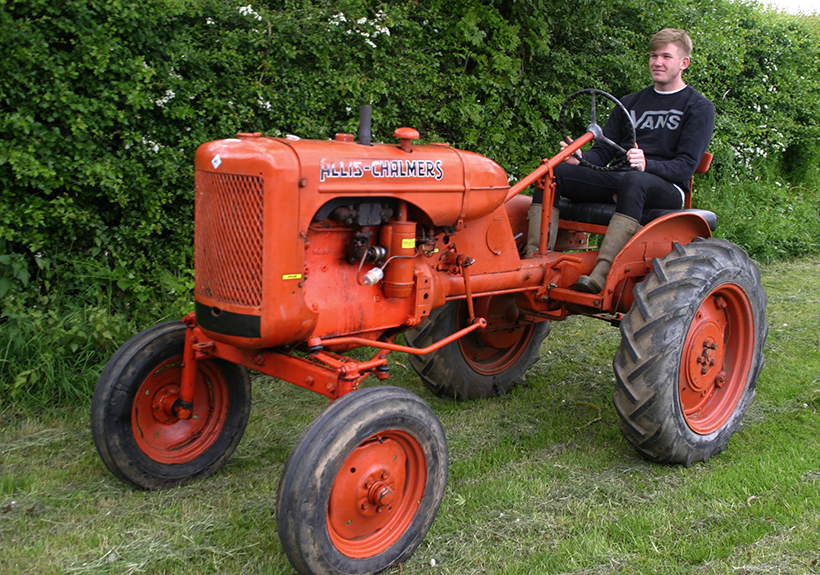
My son, Ed, appears to have taken charge of the Allis.
For a money-saving subscription to Old Glory magazine, simply click here




